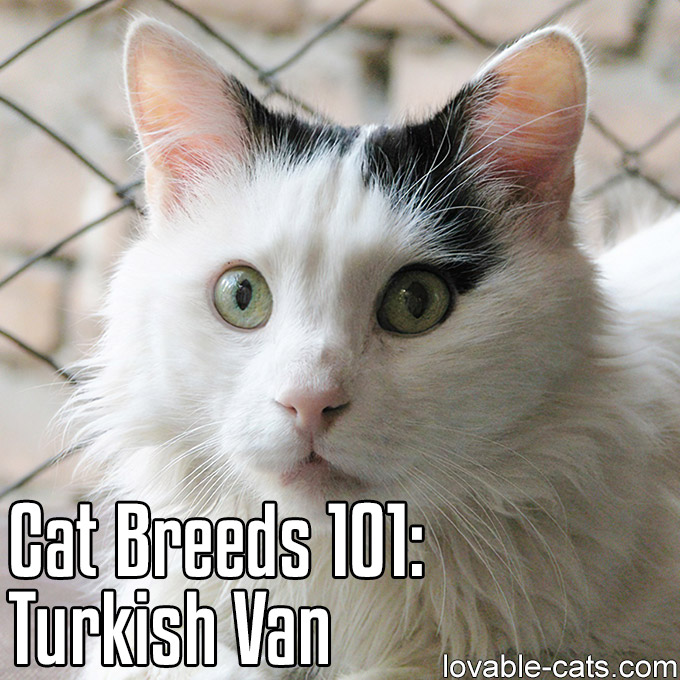
Cat Breeds 101: Turkish Van – Image To Repin / Share
Photo: Wikipedia – lic. under PD
The Turkish Van is a breed of cat whose real home is Turkey, hence the “Turkish” in its name. While this might sound like stating the obvious, there are several breeds of cat that are named after countries or regions they didn’t actually come from ; the Havana Brown did not come from Havana, the Balinese didn’t really come from Bali, but the Turkish Van really did come from Turkey!
This breed was brought to England in 1955 by Sonia Halliday and Laura Lushington, who had found the beautiful swimming kits in Turkey while they were there on a tour there. [1] The Turkish Van is a rare breed in the United States.
One thing that cats are notorious for is their dislike of water. Bathing a cat is usually no fun, and getting one into the pool with you is a cruel and unusual punishment, both for you and the cat.
But that’s not the case with the Turkish Van. Here’s a cat that actually loves to swim! Strange indeed, but that’s not all that’s unusual about this fascinating cat.
Even on dry land, the Turkish Van comes across as not quite your everyday cat. First, it’s got that strange, wonderful “van marking”, in which only the head and tail have a patch of color while the rest of the body is a brilliant white. Second, this breed has a tendency to be odd eyed, which means that one eye could be amber while the other eye could be blue. (Not all Turkish Vans are odd eyed, though.) [2]
Third, while a lot of cats we see are always asking to be picked up and played with, the Turkish Van generally prefers not to be carried, although it enjoys being petted – as long as you don’t overdo it. This cat might not get along very well with little children, but it generally lives quite nicely among good-natured dogs.
Although the Turkish Van is semi-longhaired, it doesn’t need as much grooming as other semi-longhaired cats. One reason for this is because it has no undercoat, so the tendency for hair to mat is minimized. Also, the hair strands of the Turkish Van’s coat are water repellent and dirt repellent, so it doesn’t get all sticky and weighed down so easily. Combine this with the fact that this cat loves taking its own baths and you end up with a practically self-cleaning cat. It does need a weekly combing and brushing, though, just to clear out the tangles. [1]
But the fact that the Turkish Van needs only light grooming does not mean that this is a low-maintenance breed. The Turkish Van may not love to play with little children, but it does love to play. In fact, it is hardly ever still. With its strong, powerful legs and lack of fear of water, there is practically no mischief it cannot get into. It can reach the breakables you put on the topmost shelf. It can bully the dogs. It can enter your aquarium and “fetch” the fish. One thing it can’t do is take good care of its toys, so have a good supply at hand and be ready to replace them frequently. [3]
So this is a very active, healthy cat. As a breed, it is not especially prone to any specific diseases – but it can be prone to obesity, so mind its diet. A well-cared-for Turkish Van can live for around 13 years. [3]
References:
[1] Turkish Van. The International Cat Association. https://www.tica.org/cat-breeds/item/307
[2] Turkish Van. Wikipedia. https://en.wikipedia.org/wiki/Turkish_Van
[3] Turkish Van. Vetstreet. https://www.vetstreet.com/cats/turkish-van
